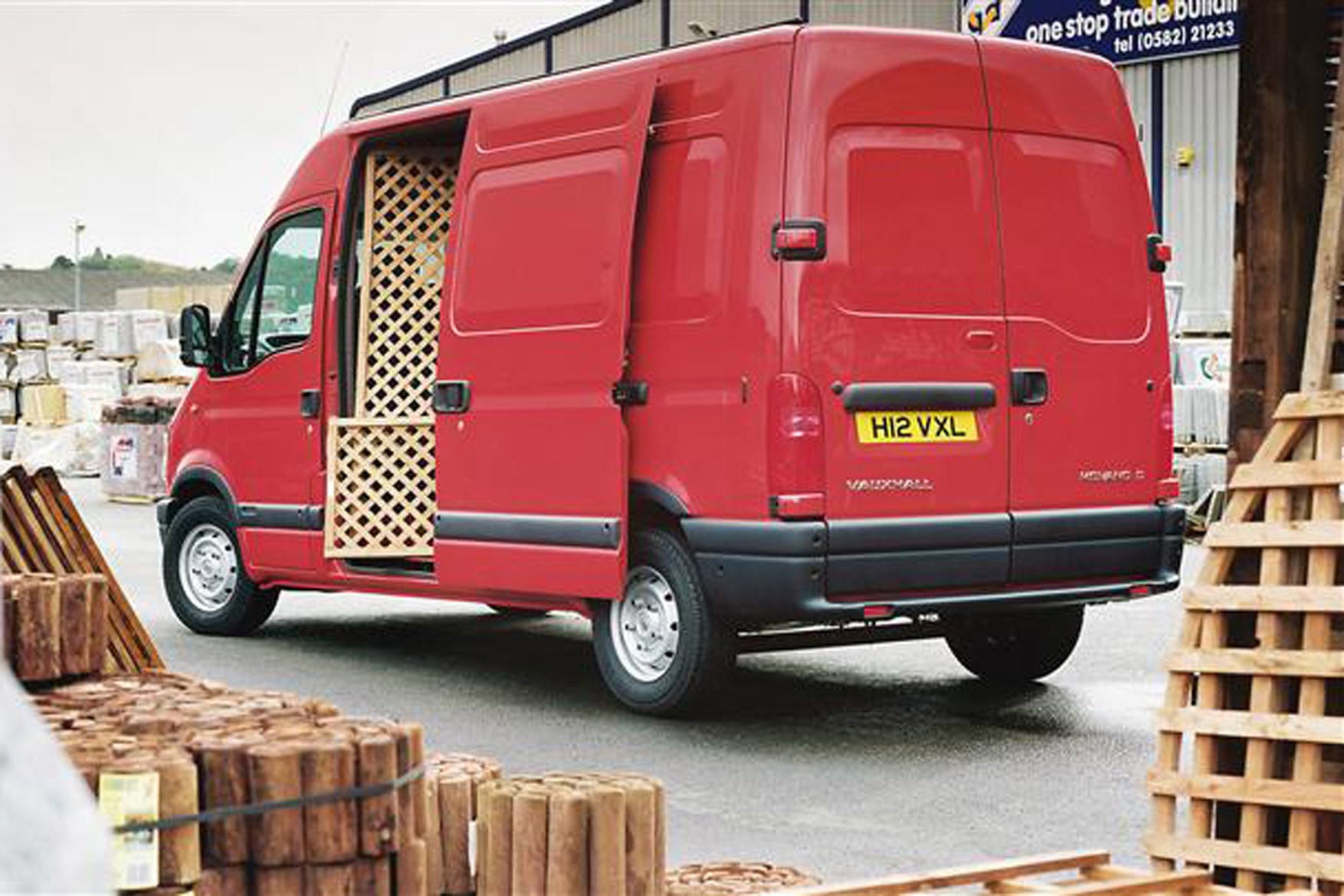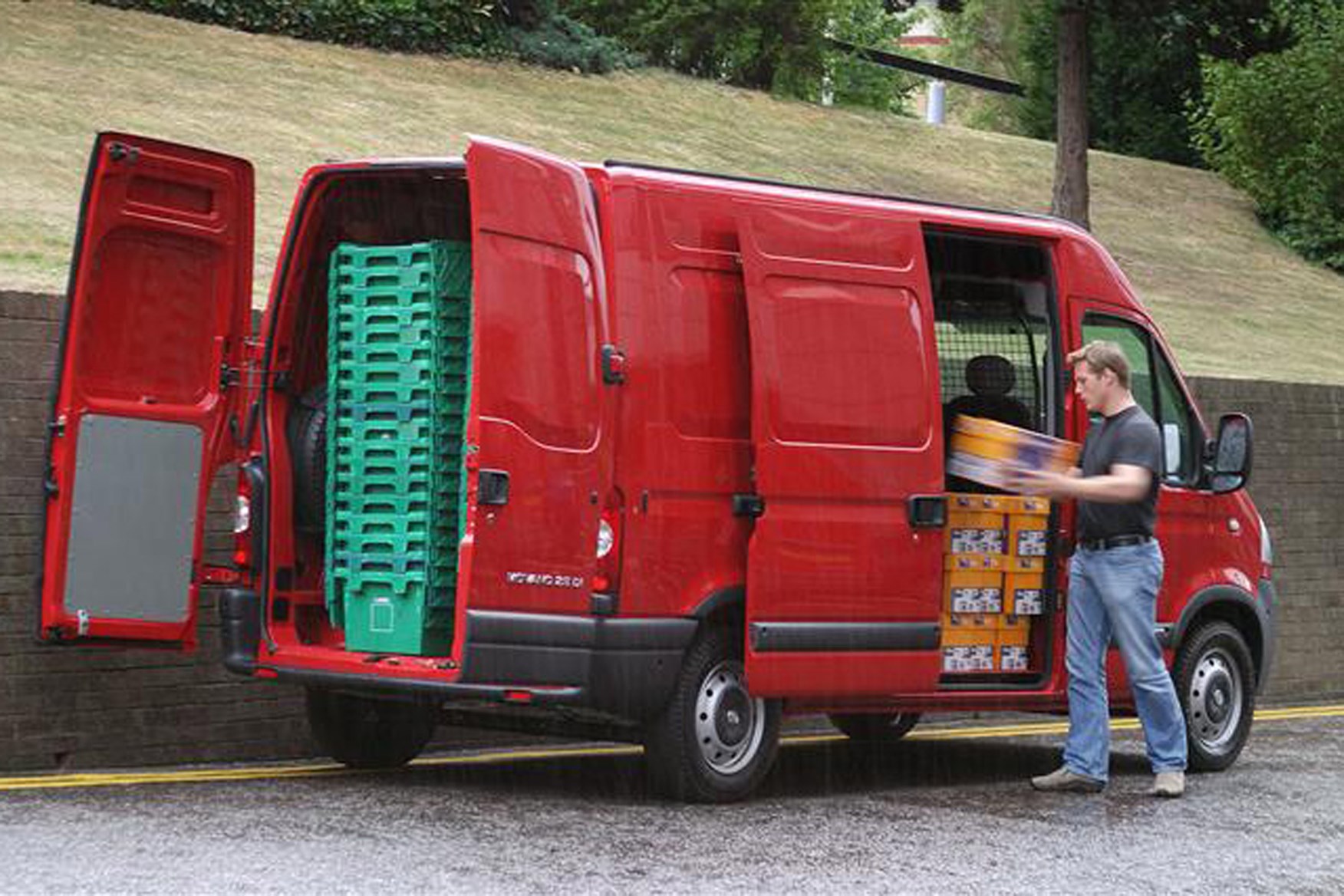Vauxhall Movano review (1999-2003)
PROS
- Good range of models and engines
CONS
- Pre-2001 engines a bit low-tech
Summary
Vauxhall burst back on to the 3.5-tonne van sector in 1998 with the Movano, after an absence in this market of some years. The Movano was a re-badged Renault Master and shared both its platform and engines – and it is none the worse for that, as the Renault boasted a fine set of diesel powerplants.

However, engines were still old-fashioned diesels at 1.9-litres and 2.5-litres. It wasn’t until 2001 that more efficient and refined common rail powerplants first appeared and were offered at 1.9-litres, 2.2-litres and 2.5-litres, featuring more power, smoother running and better fuel economy.
Gross vehicle weights range from 2.8 tonnes to 3.5 tonnes, which means that at the bottom end there is some cross-over with the stylish Vauxhall Vivaro, which also appeared in 2001, offering a far superior driving experience.
Skip to our full verdict on...
After 2001, the Movano improved greatly with the introduction of common rail technology. The 1.9-litre unit offered 82hp and 200Nm of torque, the 2.2-litre had 90hp and 259Nm of torque and the 2.2-litre offered 115hp and 289Nm of torque.These figures look relatively puny nowadays with vans offering anything up to 180hp, but for everyday purposes, the Movano proves a willing drive.

Despite its size, the Movano is a nimble and able performer on the roads and features crisp cornering and nicely-weighted power steering. As with most vans, the Movano is at its best with a half-load of cargo aboard, which takes the skittishness out of the ride. On the minus side, the gearchange had not yet migrated to the dash and was not the best in class by any means.
Creature comforts didn’t exactly feature highly as standard fittings on early Movanos but these were on a par with other vans of the age. There were plenty of goodies on offer– air conditioning, metallic paint etc, but they were all paid-for options and most buyers of new vehicles didn’t bother.
On the plus side, the Movano has a superb driver’s seat that is firm and supportive on long journeys.
The cost of running a Movano came down dramatically at the introduction of common rail engines in 2001, as these high tech units not only offer more power, but also greater fuel economy and longer servicing intervals.
Vauxhall reckons fuel economy improved by 6% for the 1.9-litre unit and a massive 12% for the 2.5-litre, while oil changes increased from 12,500 miles to 20,000 miles.
The newer engines – sourced from Renault – are legendary for their frugality and longevity. In fact they power many Renault cars as well as vans. With proper servicing and a light right foot they should be good for a couple of times round the clock on the speedo.
As with so many van manufacturers at this time, Vauxhall did not deem safety a high enough priority to offer a driver’s airbag and ABS brakes as standard. Both remained on the options list and thus, it is unlikely that most secondhand Movanos offered for sale will have them, such is the money-saving attitude of most of Britain’s fleet buyers.
On the security front, central locking and an immobiliser came as standard but an alarm was a paid-for option.





